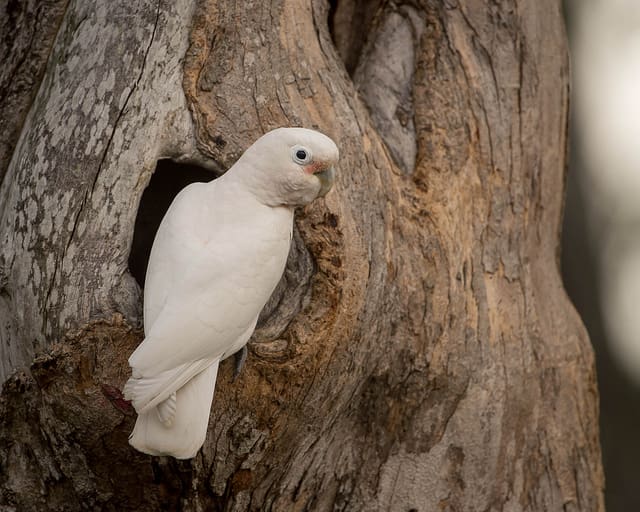Tanimbar Corella or Goffin’s Cockatoo (Cacatua goffiniana) populations are suspected to be declining moderately rapidly due to trapping and habitat degradation.
In 1993, the World Parrot Trust helped secure the release of approximately 700 Goffin’s Cockatoos from trappers. A television crew had been filming on the Indonesian island of Tanimbar and reported to the WPT that trappers were holding the birds in cages. The species had just been added to the CITES Appendix I list of threatened species. The WPT used its area contacts to pay the trappers to release the birds back into a suitable forest area. Purchasing from trappers is not a usual way of practising conservation, however, it was done to immediately save the birds. The cockatoos were checked for disease and most of them released back into the wild.
Status: IUCN Near Threatened / CITES Appendix I
Population: 300,000-400,000
Range: The Tanimbar Corella (Cacatua goffini) is endemic to Yamdena and Larat, Tanimbar Islands, Indonesia. This cockatoo favours coastal lowland primary and secondary forests and cultivated areas.
Natural history: The ecology (behaviour and diet) of Tanimbar Cockatoo is little known. Breeding season is not known, although it is confirmed that two to three eggs are laid. Birds are usually seen singly and in pairs. At dusk, they gather at communal roosts to rest.

